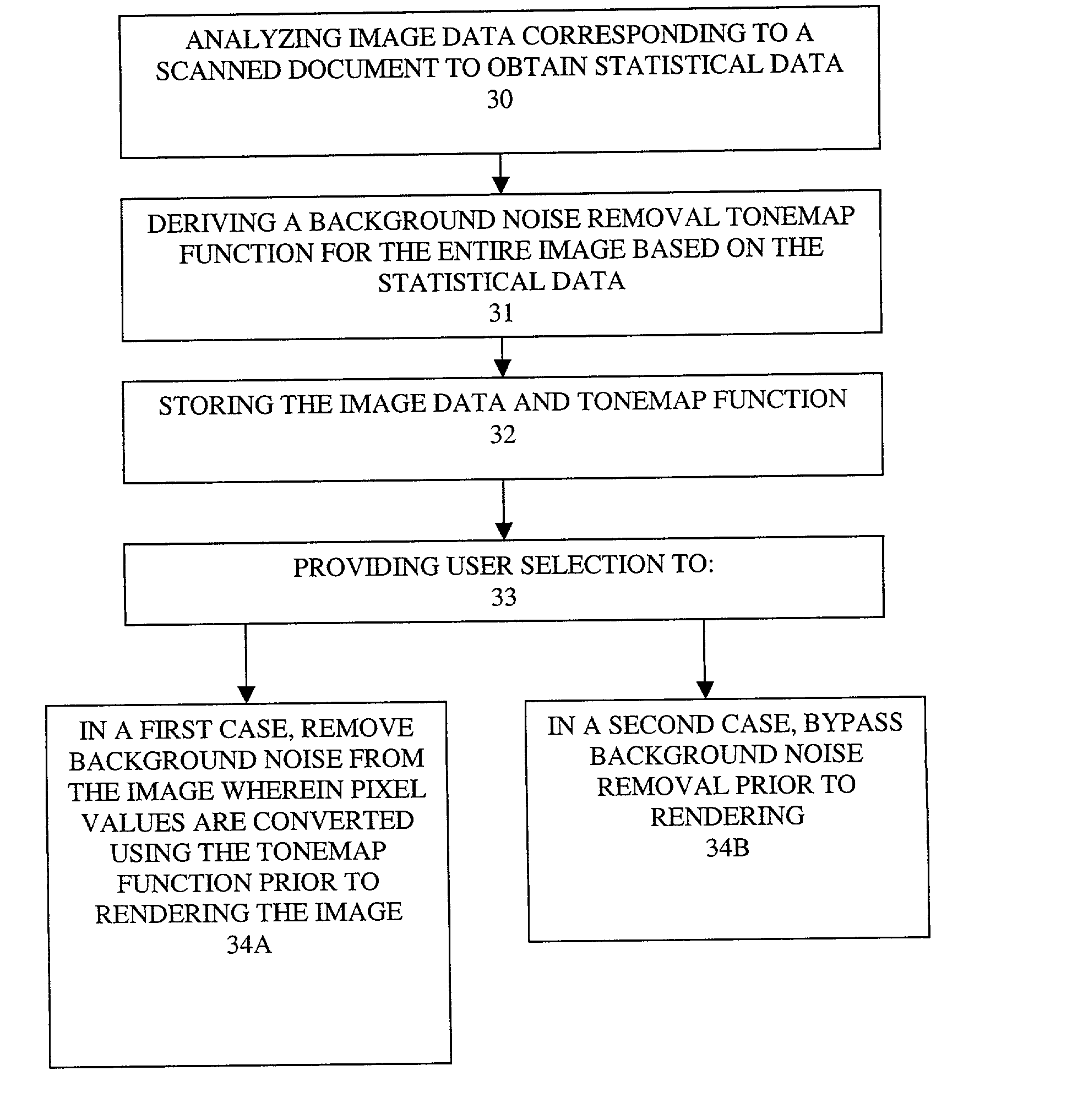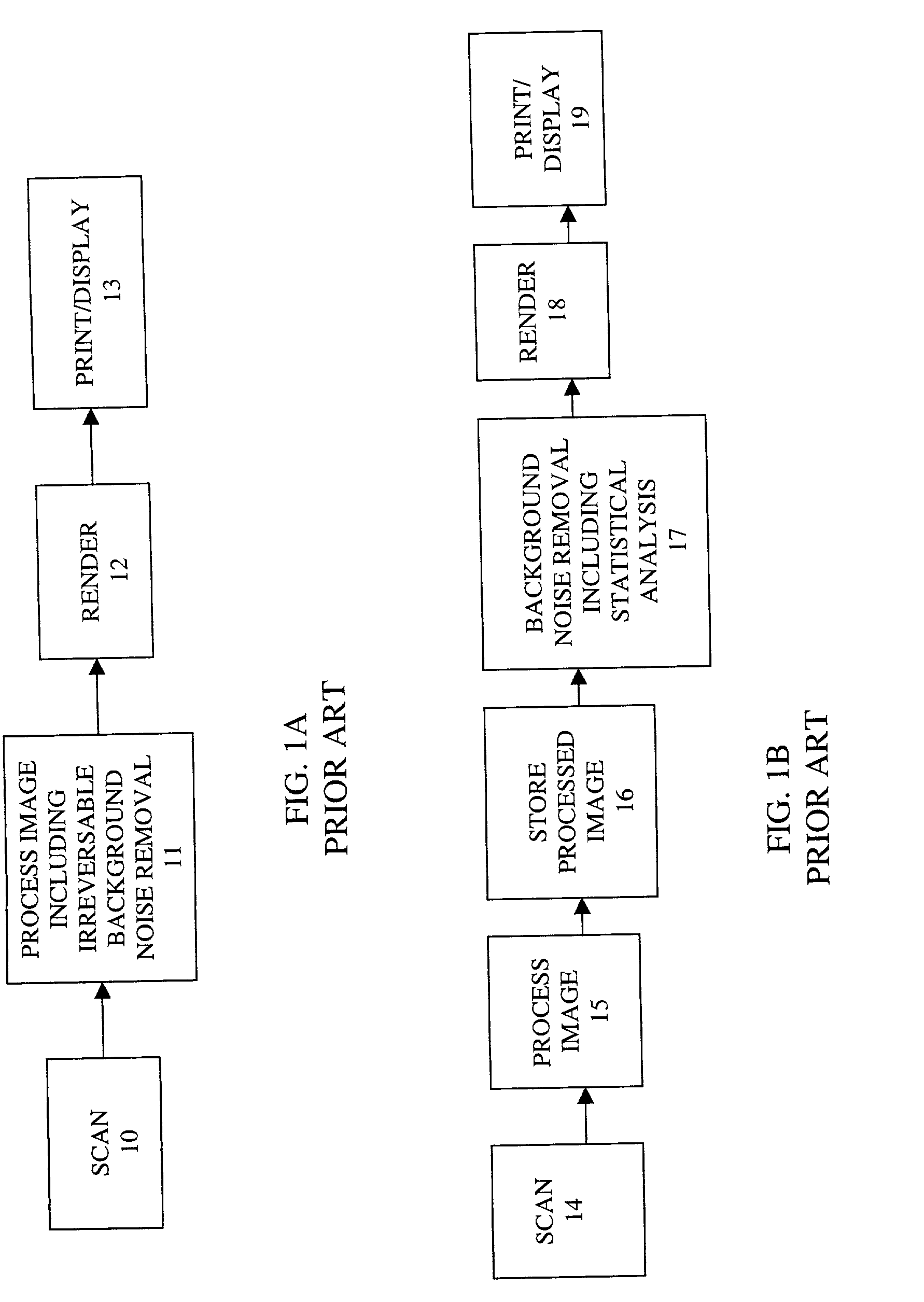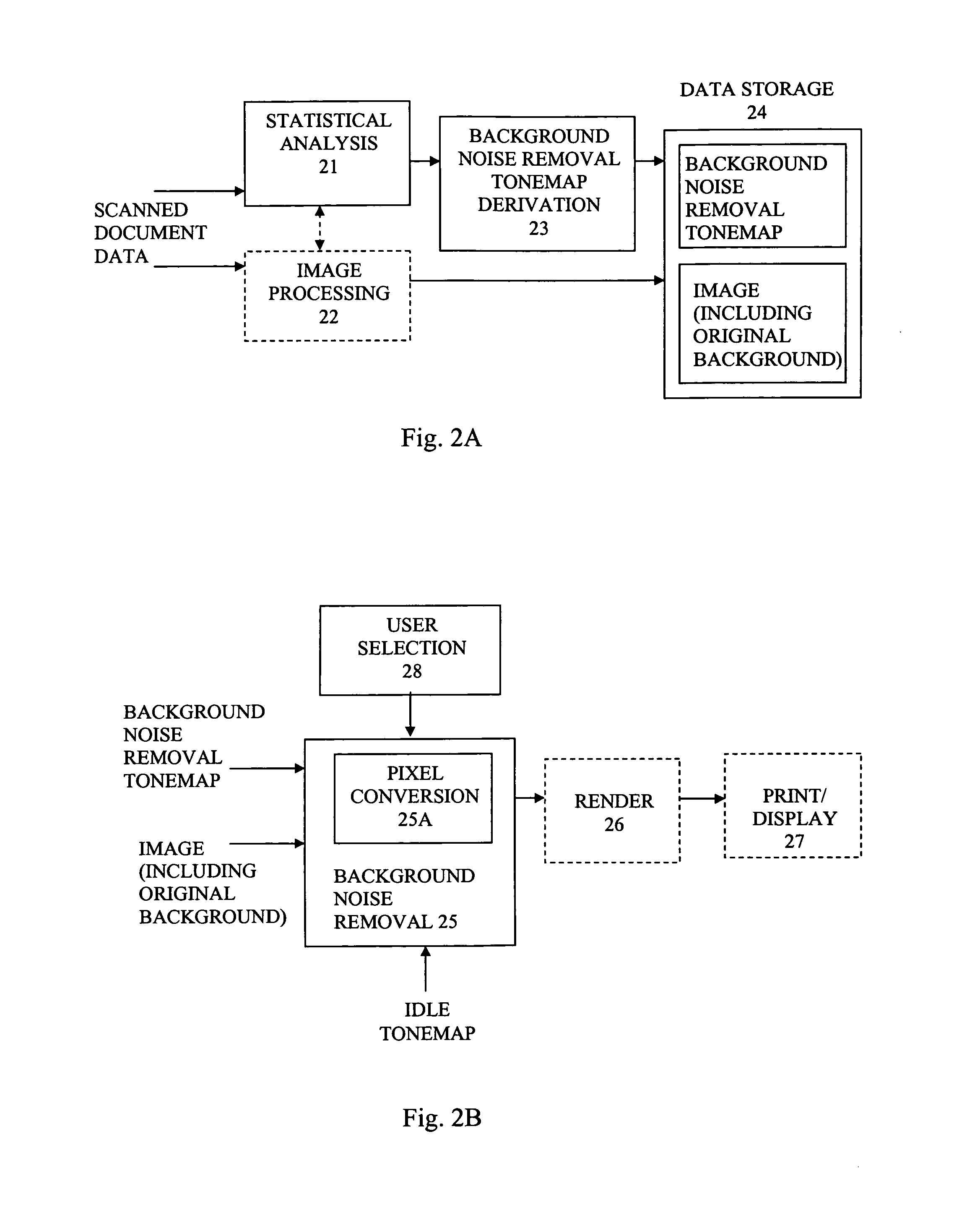User selected background noise removal for scanned document images
a document image and background noise technology, applied in the field of image processing, can solve the problems of reducing affecting the quality of the original document, so as to achieve the effect of improving the overall efficiency of the system and method
- Summary
- Abstract
- Description
- Claims
- Application Information
AI Technical Summary
Benefits of technology
Problems solved by technology
Method used
Image
Examples
first embodiment
[0029]FIGS. 2A and 2B show functional flowcharts of first and second phases, respectively, of the present invention. Referring to FIG. 2A, initially, statistical analysis 21 is performed on the scanned document image data. Statistical analysis can be achieved by performing a variety of statistical operations and calculations and can generate a corresponding variety of statistical results. For instance, some statistical operations can include estimation of tone probability distribution conditional on aspects of the image data such as edge location and size of connected components. Statistical operations can also include any estimation of tone probability using other statistical methods. Some statistical results can include the main modes of the tone probability distribution (e.g., the brightest mode corresponds to the global background tone value). A preferred statistical analysis is described herein below. According to one embodiment, statistical analysis is performed wherein an est...
second embodiment
[0037]FIGS. 4A and 4B show functional flowcharts of first and second phases, respectively, of the present invention. Referring to the first phase shown in FIG. 4A, initially, statistical analysis 41 is performed on the scanned document image data. As with the embodiment shown in FIG. 2A, the image data may be simultaneously pre-processed by image processing module 42 where its intermediate computation results can be used by the statistical analysis module 41 to perform statistical estimations. In contrast with the embodiment shown in FIG. 2A, the statistical data obtained from the analysis 41 is stored by data storage module 43 instead of being used to derive a background noise removal tonemap. Both the image data (pre-processed or unprocessed) are stored by the data storage module 43. In one embodiment, the statistical data stored by module 43 can be but is not limited to at least one luminance histograms of the image data or an estimated global background tone value.
[0038]In the s...
PUM
 Login to View More
Login to View More Abstract
Description
Claims
Application Information
 Login to View More
Login to View More - R&D
- Intellectual Property
- Life Sciences
- Materials
- Tech Scout
- Unparalleled Data Quality
- Higher Quality Content
- 60% Fewer Hallucinations
Browse by: Latest US Patents, China's latest patents, Technical Efficacy Thesaurus, Application Domain, Technology Topic, Popular Technical Reports.
© 2025 PatSnap. All rights reserved.Legal|Privacy policy|Modern Slavery Act Transparency Statement|Sitemap|About US| Contact US: help@patsnap.com



